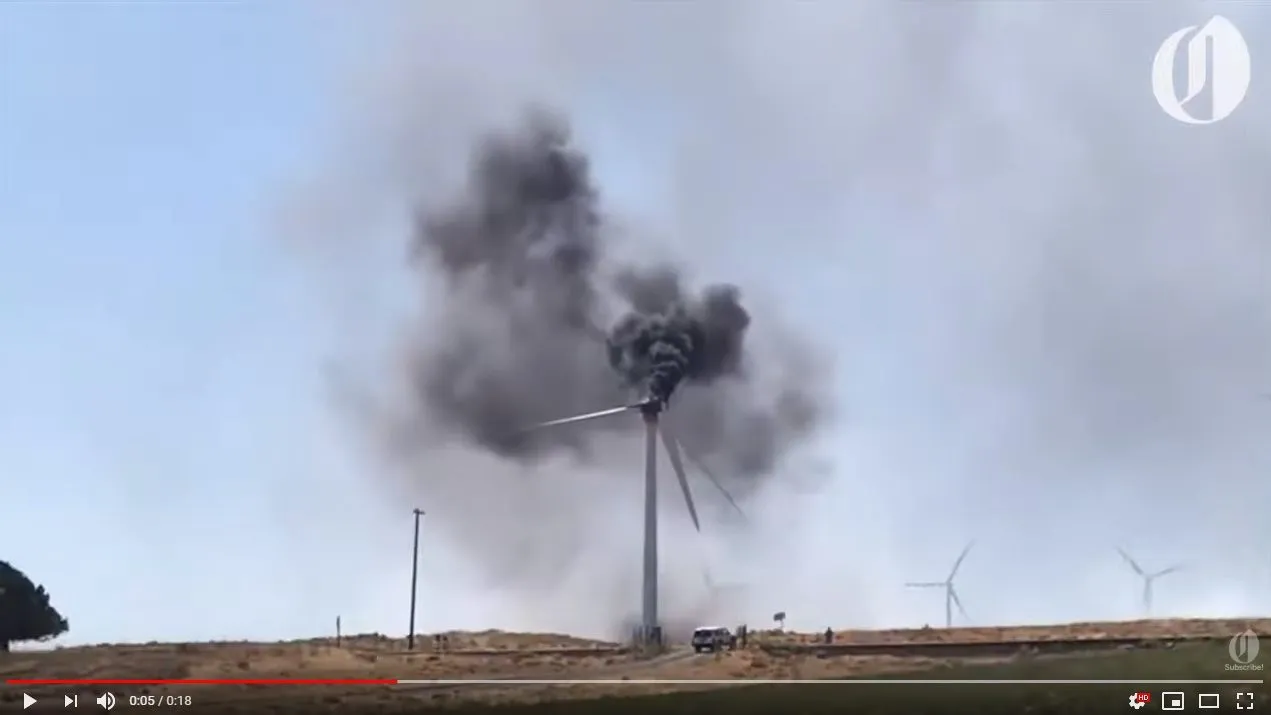Larry Bell
cfact.org
CFACT Advisor Larry Bell heads the graduate program in space architecture at the University of Houston. He founded and directs the Sasakawa International Center for Space Architecture. He is also the author of “Climate of Corruption: Politics and Power Behind the Global Warming Hoax.”
Europe’s anti-carbon policy offers ”Green New Disaster” lessons for America as soaring energy prices and crippling shortages have rippled across the Atlantic.
Efforts to meet their CO2 emission reduction commitments under the Paris Climate Accords through heavily subsidized wind and solar programs which don’t provide reliable round-the-clock power have succeeded only in making Europeans more desperately dependent on competitively scarce and costly fossil energy to power their grids.
The U.K. and Germany have become ever more dependent on Russian natural gas after banning hydraulic fracturing which now allows their rich gas shale resources to go to waste. Meanwhile, the Netherlands is shutting down Europe’s biggest gas field.
By 2013, Germany had installed more solar capacity than any other nation, much of it imported from China. Of the two, solar was less efficient than wind.
Adding that intermittent wind and solar electricity also challenged power reliability.
Up until 2008, Germany’s grid had never been interrupted. In 2012 there were 1,000 brownouts, followed by more than 2,500 in 2013.
By 2020, the U.K. relied on wind for 24% of its power-generation mix, but didn’t have a backup plan when it fell to 2% of supplies in late summer this year.
In the past decade the U.K. and Europe have shut down hundreds of coal plants, and Britain has only two remaining. Spain shut down half of its coal plants last summer.
Lackluster wind-power generation has contributed to a five-fold increase in European natural gas spot prices over the past year, while shuttering of those many coal plants has raised demand and caused prices of that fuel to triple.
Post-COVID fossil fuel consumption is causing demand and prices for carbon permits under the Continent’s cap-and-trade scheme to surge, pushing electricity costs even higher, a condition that will become far worse as winter heating bills arrive.
Electricity prices in the U.K. last month jumped to a record £354 ($490) per megawatt hour, a 700% increase from the 2010 to 2020 average.
These skyrocketing power prices have caused U.K steel makers to suspend production as European metals producers are asking their governments for aid.
This is occurring as Europe’s natural gas inventories — at a record low for September — are seeing benchmark prices soaring above $20 per MMBtu as they compete to attract global Liquefied Natural Gas (LNG) supplies.
Russia is exploiting Europe’s energy difficulties by reducing gas deliveries, perhaps to pressure Germany to complete certification of its Nord Stream 2 pipeline, which bypasses Ukraine.
The Biden administration gave Moscow a pass to accomplish this by lifting a Trump sanction on the project.
Global competition for fossil fuels to meet critical energy demands is also surging across Asia and South America, where drought has crimped hydropower, and manufacturers are also consuming more energy to supply Western countries with goods.
Japan has become especially dependent on liquefied natural gas imports after shutting down most of its nuclear power plants after Fukushima in 2011.
Even China has been forced to ration electricity to energy-hungry aluminum smelters because of a coal power shortfall, sending world aluminum prices soaring to a 13-year high.
China has been forced to purchase a lot more coal from the U.S. after banning the commodity’s import from Australia over a diplomatic spat.
With coal also in short supply, gas-powered generators in Asia are switching to burning oil, pushing up those prices. Goldman Sachs projects that crude could hit $90 a barrel by year’s end, which could add 10 to 20 cents a gallon to gasoline prices at the pump.
Biden policies are already contributing to global oil supply shortages, with crude prices hitting $80 a barrel last month, and the Organization of the Petroleum Exporting Countries (OPEC) warning that oil could skyrocket higher without increased investment in new production.
Inexplicably, after shutting down the Keystone XL pipeline and drilling in the Arctic National Wildlife Refuge (ANWR) — while allowing Russia to complete its Nord Stream 2 pipeline under the Baltic to Germany — Joe Biden then unsuccessfully pleaded with OPEC to increase supply to help lower politically unwelcome U.S. pump and natural gas prices.
Americans are already feeling the pain of escalating energy prices, with electricity and utility gas up 5.2% and 21.1%, respectively, over the last 12 months in August. Some analysts predict that these inflationary costs may double this winter if U.S. production doesn’t increase, and if global demand remains high.
Adding to this insanity, energy companies have scrapped a 116-mile pipeline to deliver gas from Pennsylvania to New Jersey due to regulatory obstructions as blockades by Democratic states in the Northeast have depressed gas prices and investment in the Pennsylvania Marcellus shale.
Accordingly, with gas in short supply, New York and New Jersey may wind up burning more oil for electricity this winter.
In the meantime, permits issued by the Interior Department for drilling on federal land declined to 171 in August from 671 in April.
Even worse, the Democrats’ proposed ”Build Back Better” $3.5 trillion-plus spending bill — costing an average $24,424 for each of America’s 143.3 million taxpayers — includes royalty and fee increases that would make U.S. oil and gas producers globally uncompetitive.
Although this socialist extravaganza will realistically weigh in at more than $5 trillion, Joe Biden somehow argues that all of this will cost ”zero.”
Meanwhile, despite hundreds of billions of dollars of global subsidies for intermittent wind and solar power, a Renewables 2021 Global Status Report (GSR) covering a period from 2009 to 2019 indicates that the percent of world final energy consumption coming from fossil fuels had dropped ”all the way” from 80.3% to 80.2% … an almost imperceptible 0.1%.
All this underscores that while remaining the world’s largest gas producer, surpassing our adversaries Russia, Iran and China, America isn’t immune from turmoil in energy markets.
As observed by The Wall Street Journal, Europe offers a portent of the havoc to come under the Biden administration’s policies that aim to shut down fossil fuel production and power the U.S. grid with dependence on ”renewables.”
Instead — no matter how heavily subsidized in vain hopes to purge CO2 (plant food) from the economy — Europe’s problems offer a dire warning to America, if only Democrats will heed it.
Please share this article so that others can discover The BFD.









